Dental implants embody a major advance in oral restoration. Offering a reliable alternative to dentures and bridges, they integrate harmoniously with oral anatomy to replace one or more lost teeth. Our comprehensive guide aims to shed light on every facet of dental implants, from the insertion procedure to post-operative management, highlighting their significant impact on patient well-being.
What is a dental implant?
A dental implant is a prosthesis surgically inserted into the jawbone to replace the root of a missing tooth. This artificial root takes the form of a titanium or zirconia screw to which a crown, bridge or denture can be attached. The implant serves as a stable foundation for these dental prostheses, restoring not only the smile’s aesthetics but also the jaw’s functionality, such as chewing and speech. The implant procedure has become standard practice in rehabilitative dentistry, revolutionising the management of tooth loss.
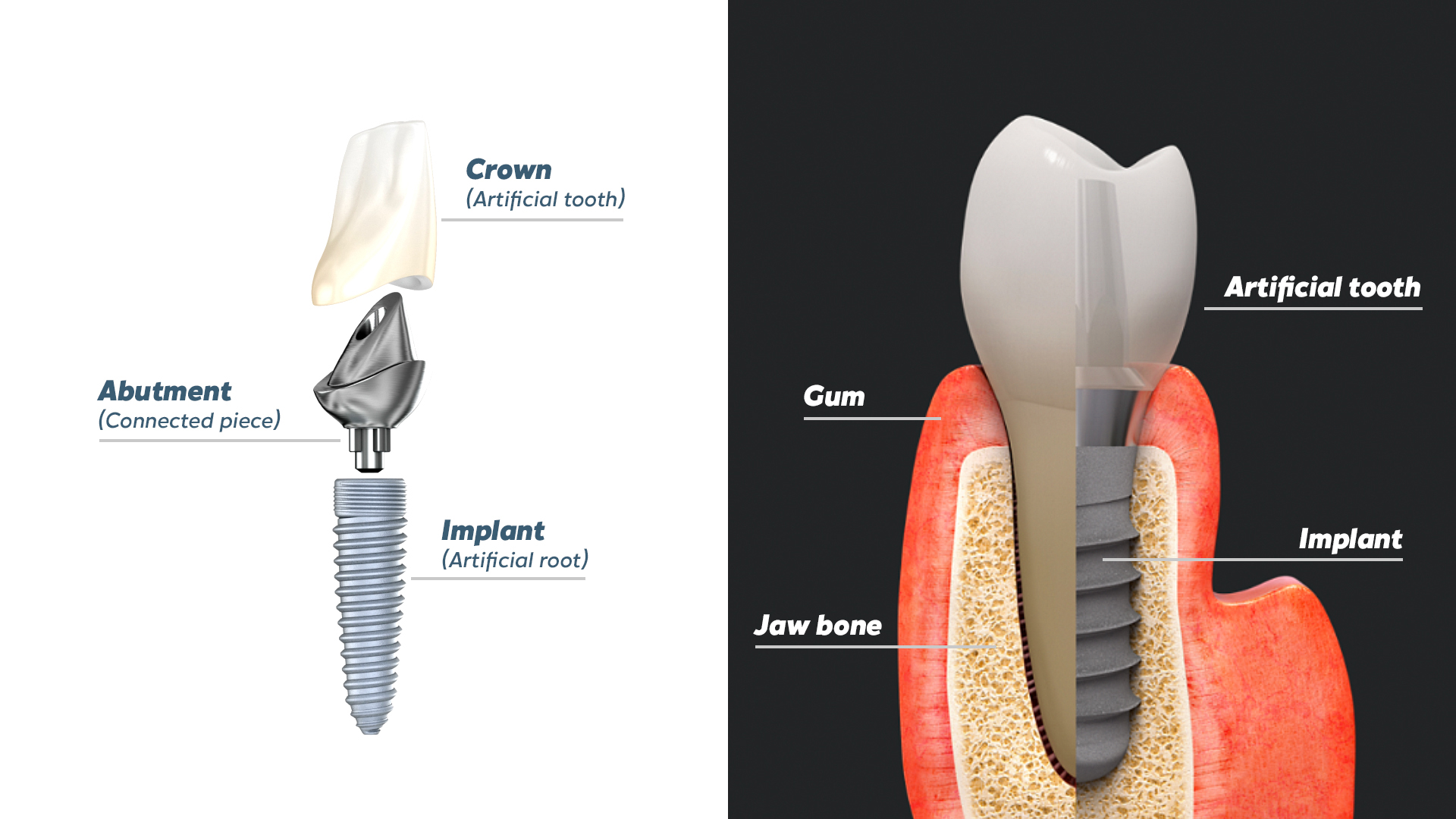
The different types of implants
Dental implants are essential tools in modern dentistry, offering various solutions for patients with different needs. They are mainly categorised based on the surgical technique employed and their fixation method within the bone, each designed to support replacement teeth under varying conditions. Here’s a closer look at the three primary types:
- Endosseous Implants: These are the most widely used type of dental implants and are directly implanted into the jawbone. They serve as a stable foundation for supporting one or more artificial teeth. Endosseous implants are especially beneficial for patients using dentures or bridges, as they offer a more secure and stable base, enhancing oral functionality and contributing positively to overall dental health.
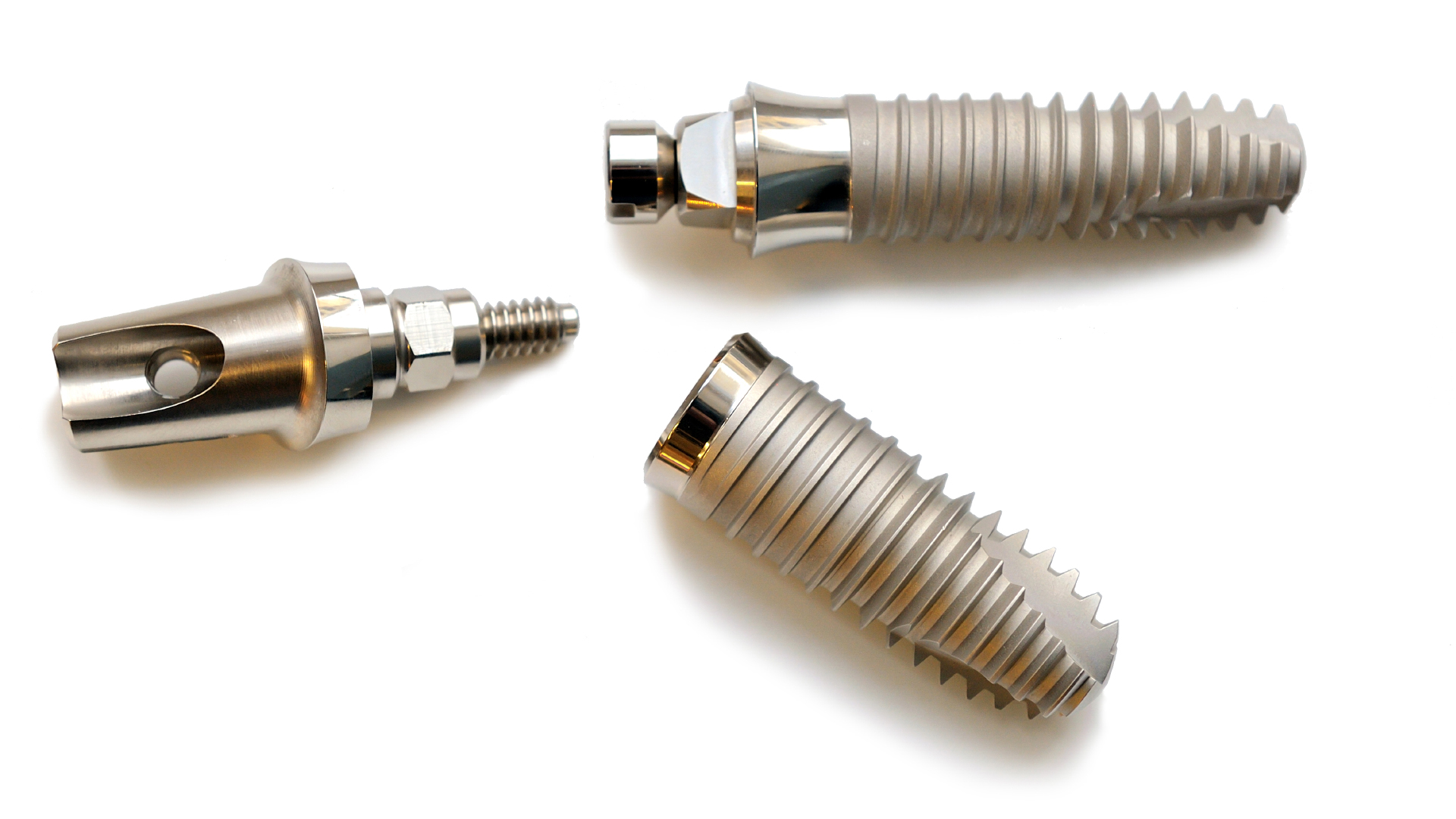
- Subperiosteal Implants: Positioned on top of the jawbone but underneath the gum line, subperiosteal implants are suitable for patients lacking sufficient bone height or those who are unable to use conventional dentures. However, their usage has significantly declined in recent years. In cases of inadequate bone volume, dental professionals often recommend alternative procedures like bone grafting or sinus lifts to prepare for more traditional implant types.
- Zygomatic Implants: The least common among the three, zygomatic implants are anchored into the cheekbone (zygomatic bone) instead of the jawbone. They are considered for patients experiencing severe bone loss in the jaw who cannot accommodate conventional implants. Due to their unique placement, zygomatic implants require specialised surgical expertise and are typically recommended only when other implant options are not viable.
Each type of implant has specific indications and requires careful evaluation by the dental surgeon to determine the most appropriate.
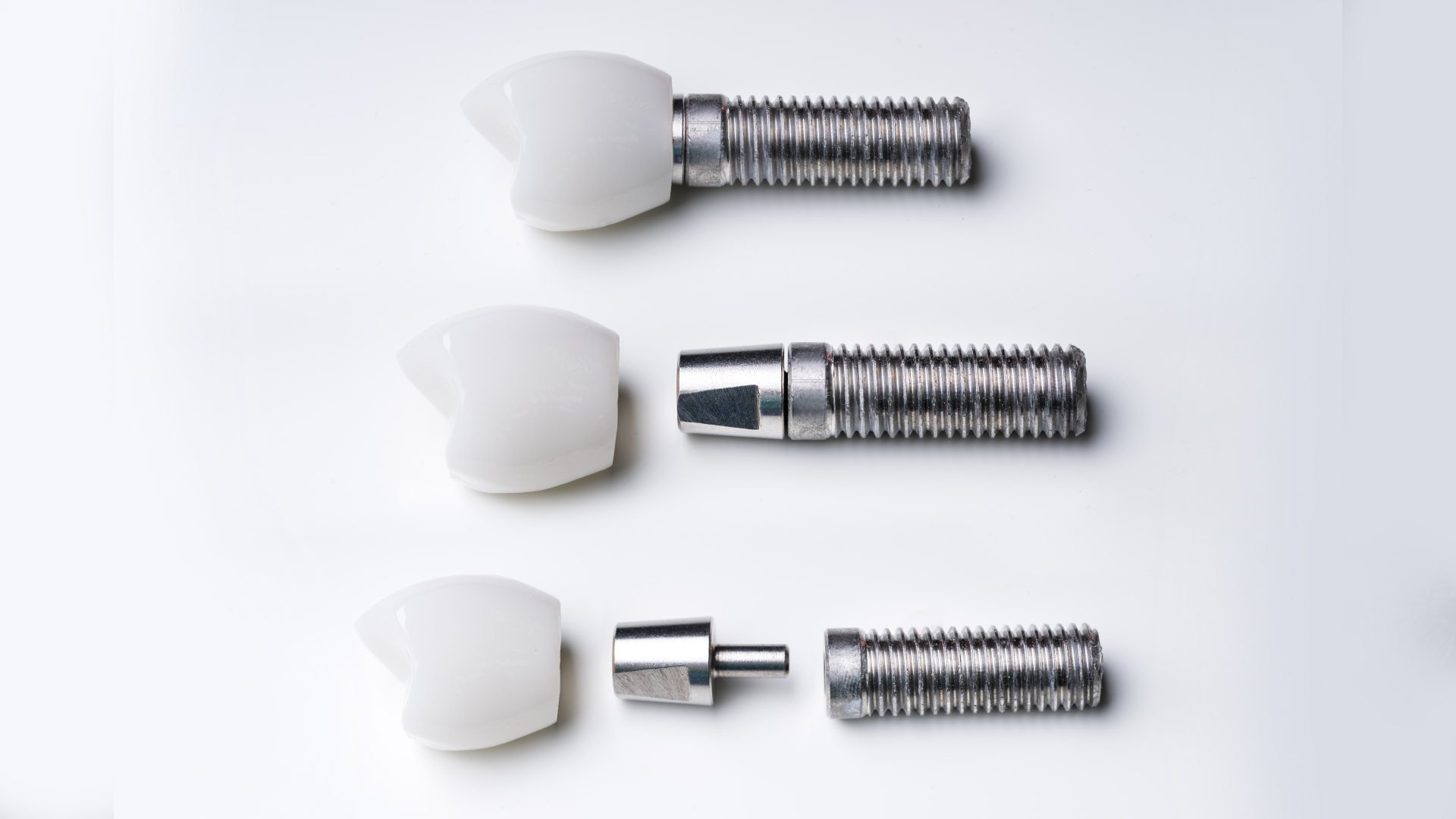
The materials used
Implant materials must be biocompatible to avoid rejection reactions and promote osseointegration, where the bone bonds directly to the implant. Here are the most commonly used materials:
- Titanium is the material of choice for most dental implants due to its high strength, biocompatibility and ability to integrate with bone. Titanium has been used for decades and has a proven success and safety track record.
- Zirconia: More recently, zirconia has gained popularity as an implant material. Often used for crowns and bridges, zirconia is appreciated for its superior aesthetics and hypoallergenic properties. Zirconia implants are one-piece, with no junction between two screwed metal parts.
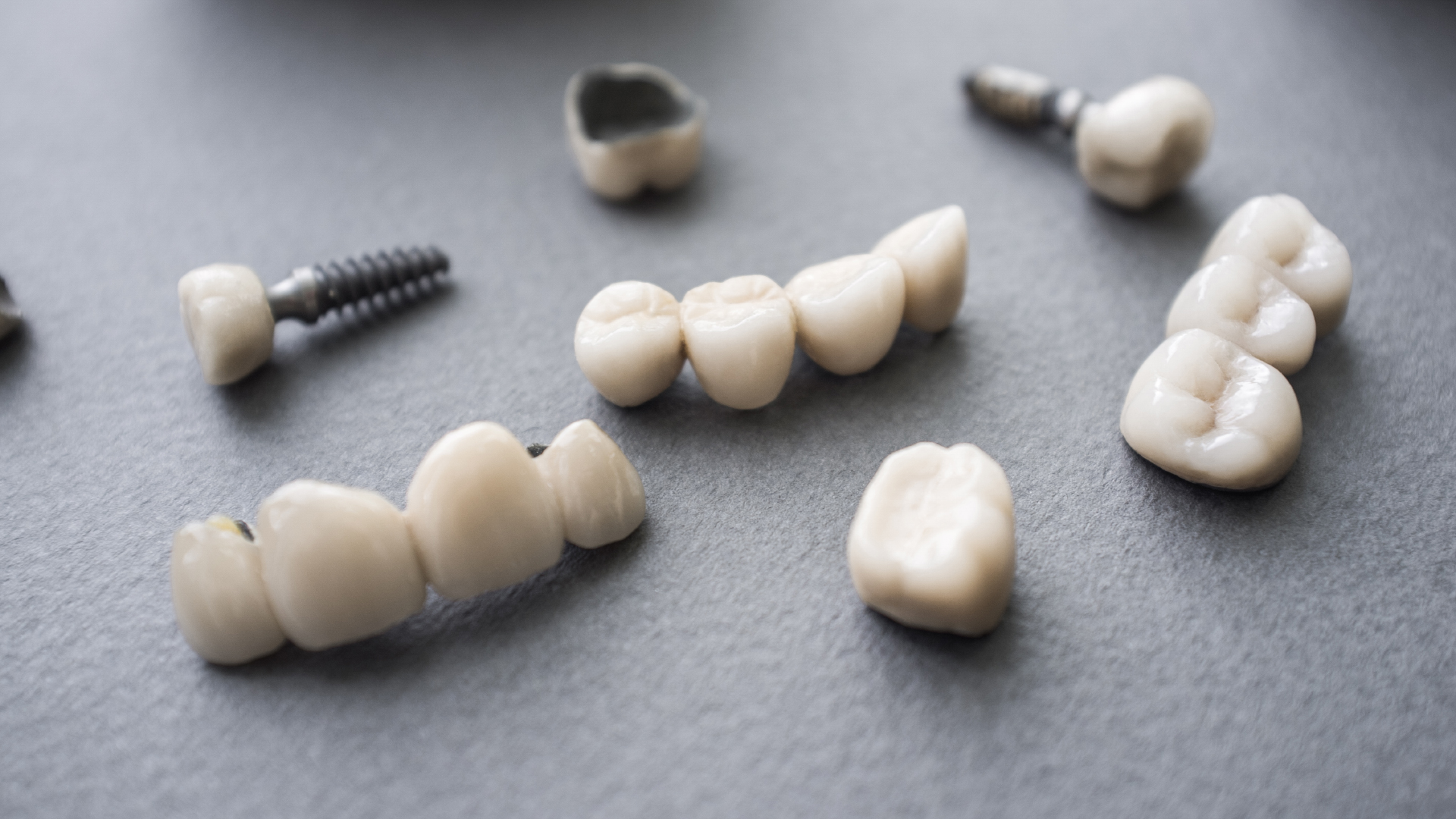
The implant type and material selection is made after a thorough evaluation by a dental professional, taking into account overall oral health, aesthetic and functional needs, and patient preference.
Indications and contraindications for dental implant procedure
Dental implants are frequently recommended in a variety of situations. Firstly, they are used to replace missing teeth permanently. This approach offers a strong alternative to removable dentures. In addition, implants are used to stabilise these removable dentures, significantly improving their retention and functionality. By restoring the ability to chew and speak, implants help to improve patients’ quality of life. In addition, they play an essential role in preventing bone resorption, as they stimulate the jawbone, thus preserving the facial structure.
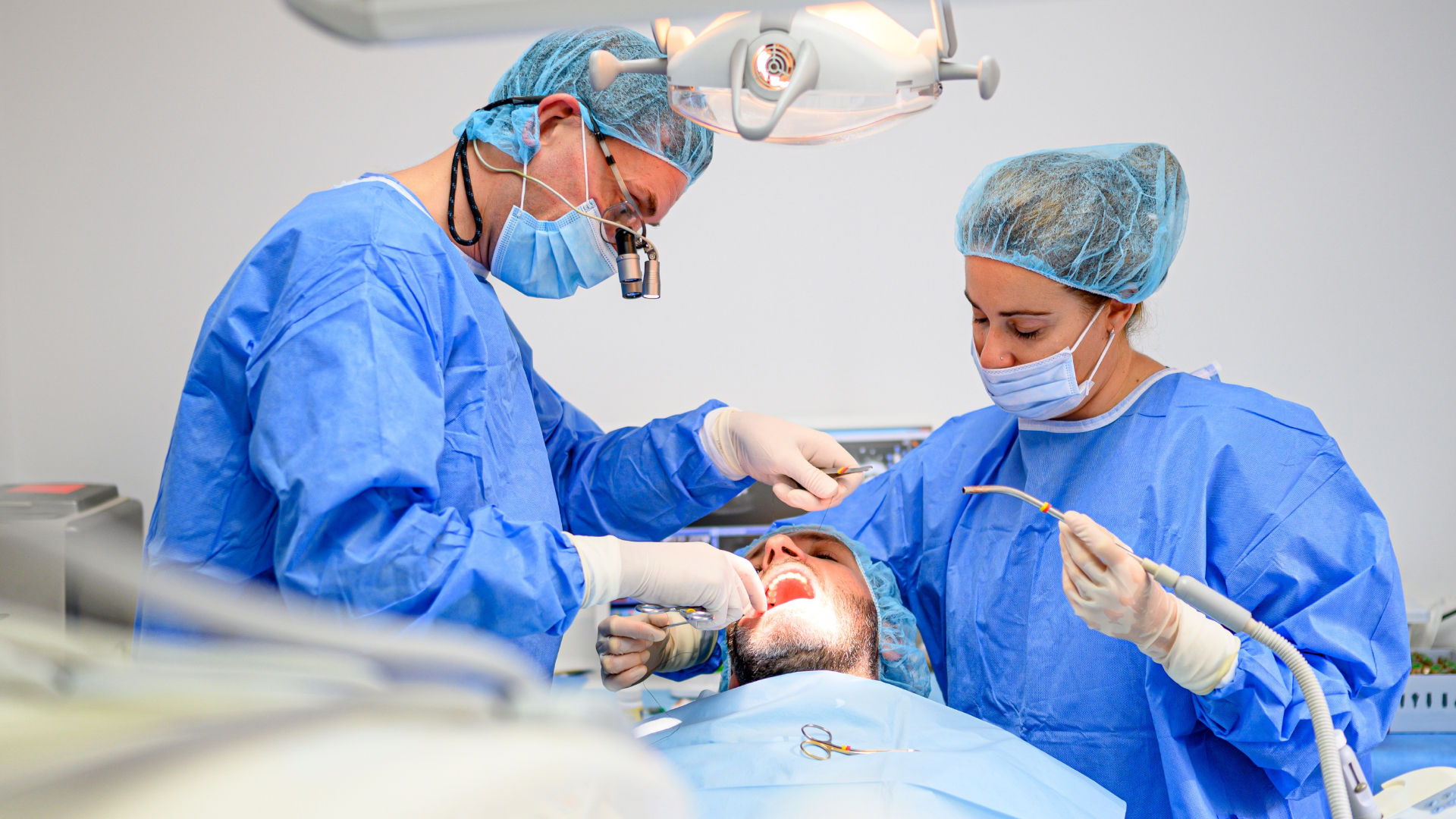
Certain medical conditions, such as coagulation disorders, can increase the risk of complications during implant procedures. Active smoking is also an important consideration, as it can hurt tissue healing and implant integration. Finally, in cases of active oral infection, treating the infection before proceeding with implantation is generally recommended, as an ongoing infection can compromise the procedure’s success.
Dental implant procedure
Placing a dental implant is a meticulous medical process that requires several steps to ensure its success:
- Preliminary consultation: this first step is crucial. The dentist assesses the patient’s oral health and discusses expectations and treatment goals. It is essential to mention any medical conditions or medications that could affect the procedure.
- Health check: the dentist performs a complete health check. This may include medical and surgical history questions, allergies, and current medications. The aim is to identify any factors influencing implant procedure or healing.
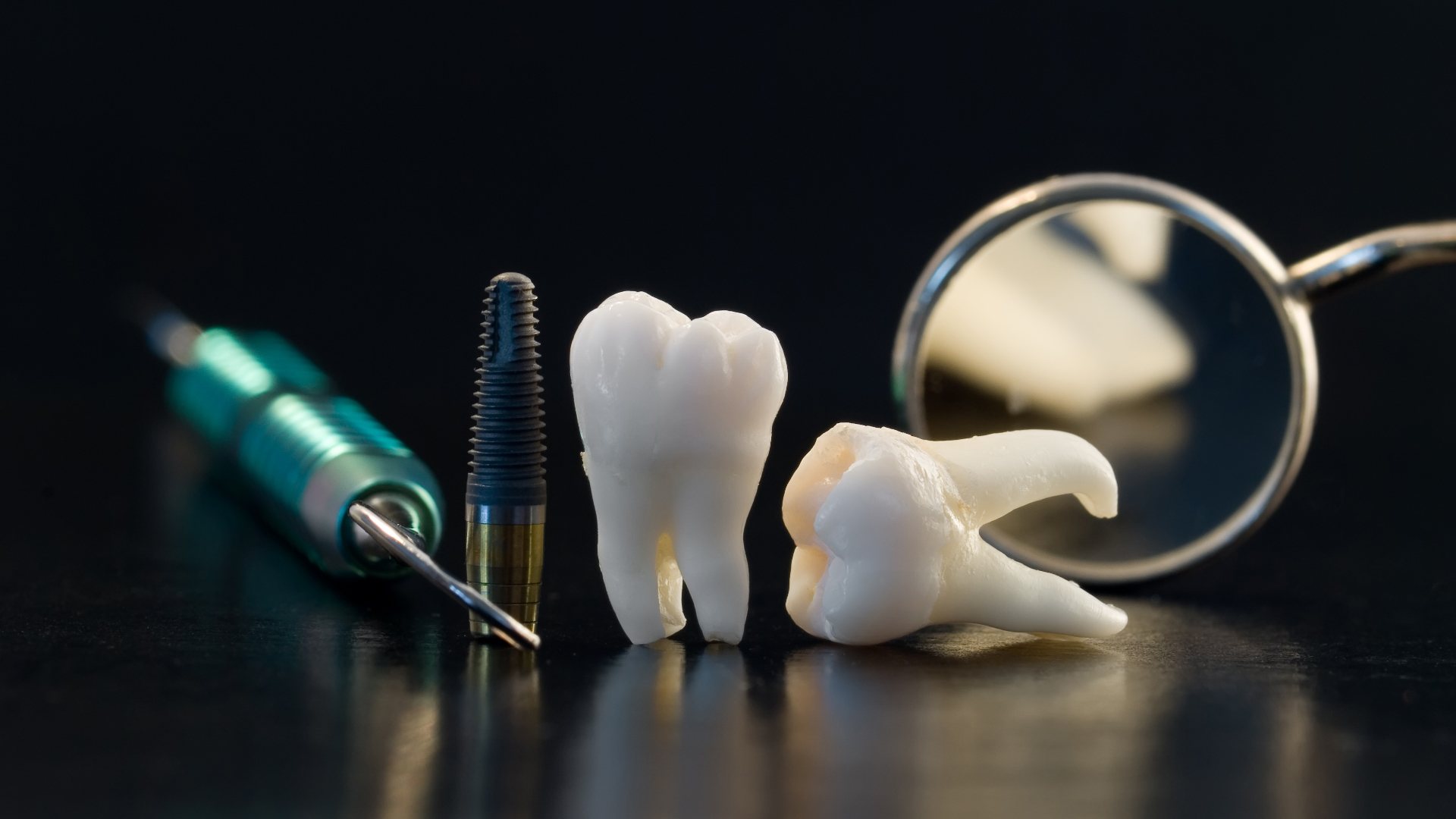
- Pre-operative examinations: in-depth examinations are carried out to plan the procedure. This usually includes X-rays or a dental scan to assess bone density and jaw structure, which is essential for implant procedures.
- Surgical technique: The implant procedure is performed under local anaesthetic. An incision is made in the gum to expose the bone, and then a hole is drilled to insert the implant. After the implant procedure, the gum is closed with sutures.
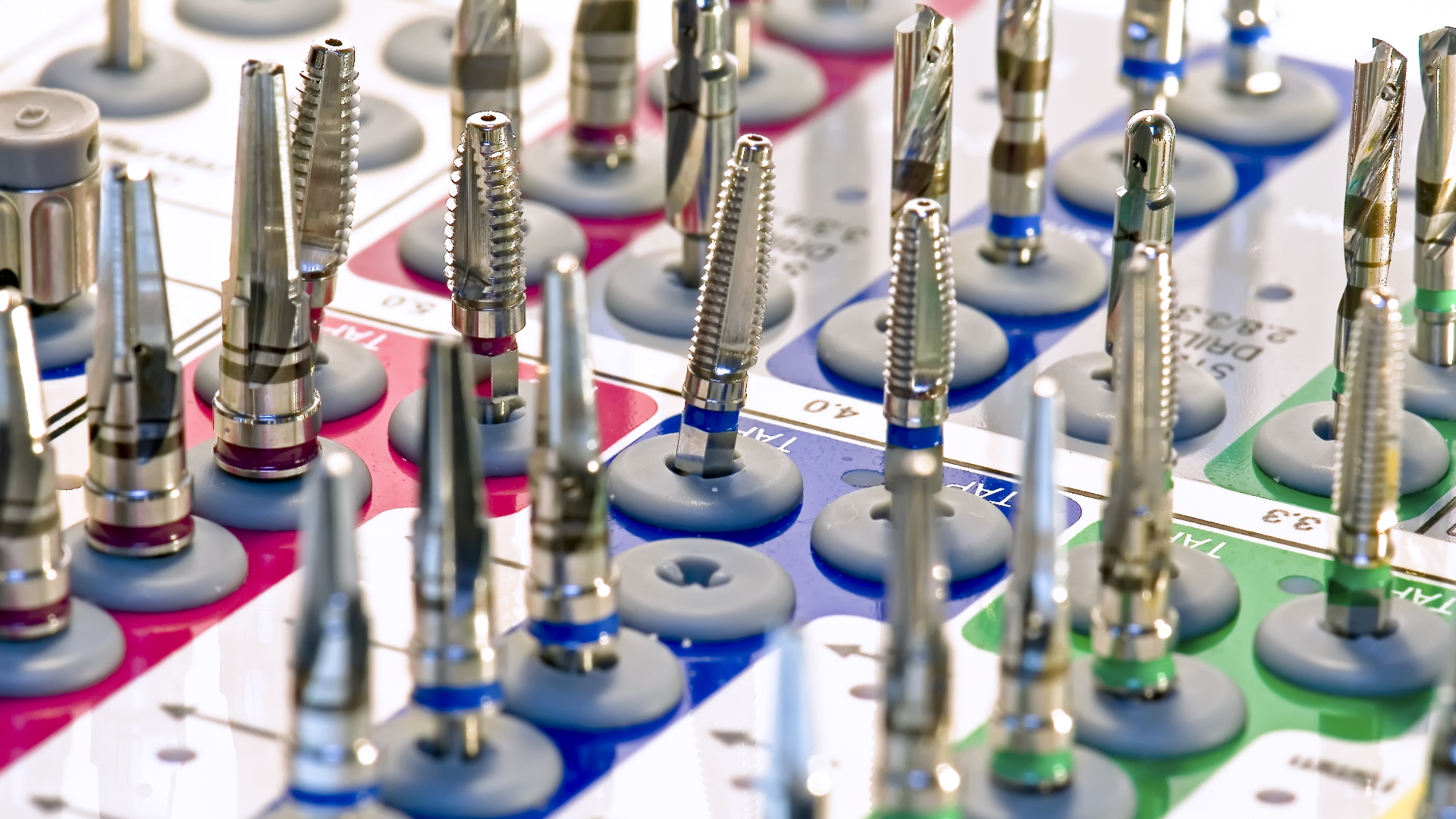
- Post-operative instructions: after surgery, the dentist will provide detailed instructions for recovery. This may include recommendations on diet, oral hygiene, and taking medication to manage pain and prevent infection.
Successful dental implant procedure depends greatly on following these steps and post-operative care.

The different protocols for dental implant procedure
Dental implants can be placed according to different protocols, each with its own specific features, advantages and disadvantages:
Two-step protocol
The two-stage protocol involves two separate surgical procedures. In the first procedure, the implant is inserted into the jawbone. The gum is then closed, leaving the implant under the gum for healing. After a few months, a second surgery is performed to expose the implant and attach an abutment (or connector) to support the crown.
- Advantages: It allows better implant bone integration and reduces the risk of infection.
- Disadvantages: It requires two surgeries and a longer healing period before final crown placement.
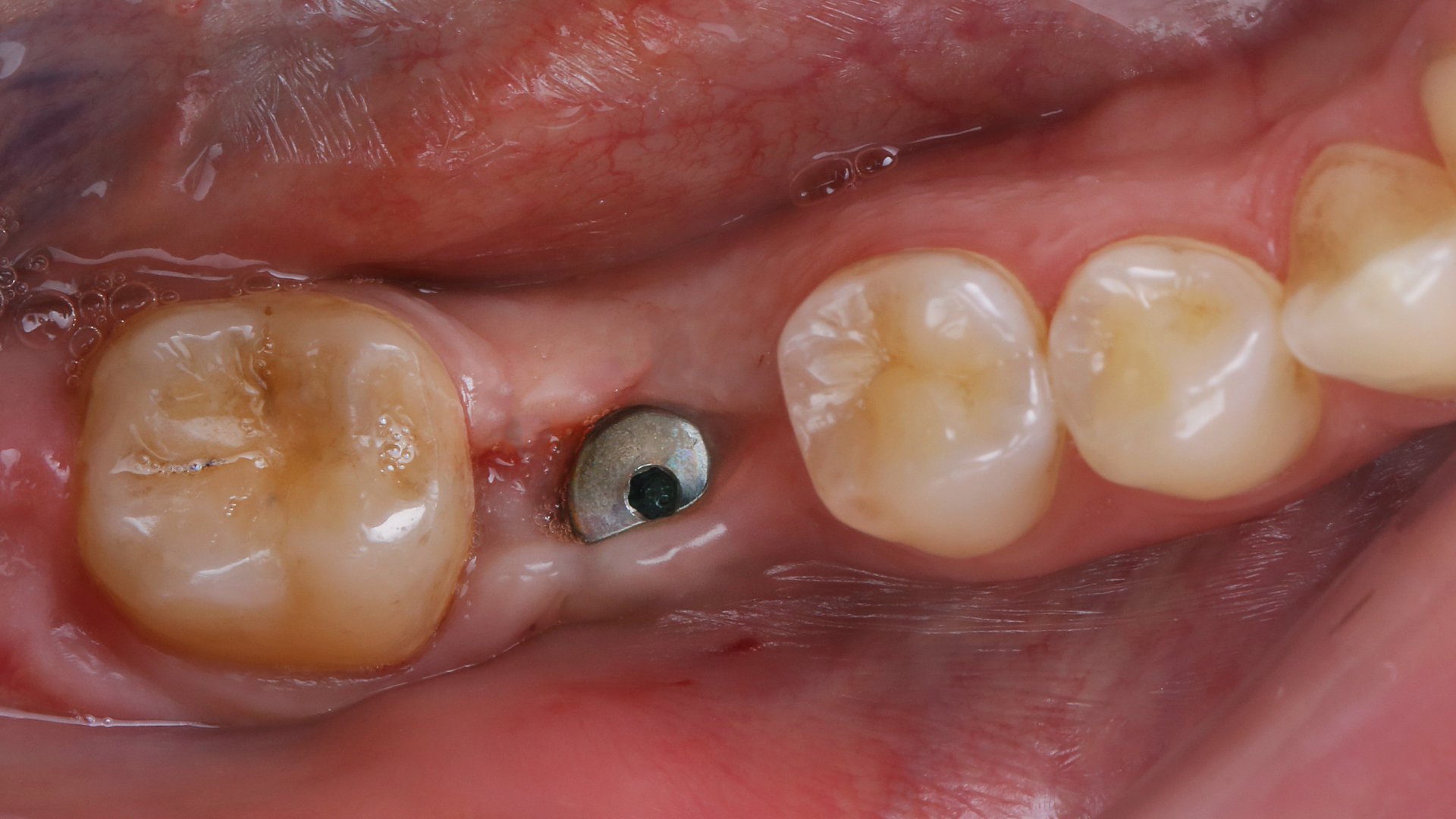
One-step protocol
This protocol involves a single surgical procedure. The implant and abutment are placed at the same time. The gingiva is not completely closed over the implant, leaving the abutment visible through the gingiva.
- Advantages: Less invasive with a single surgery, it reduces overall treatment time.
- Disadvantages: It presents a slightly increased risk of implant exposure during the healing phase, which may affect bone integration.
Immediate loading protocol
Immediate loading enables a provisional prosthesis to be fitted on the same day as the implant is placed. This technique is often used for anterior dental implants where aesthetics are a major concern.
- Advantages: It offers an immediate aesthetic advantage and reduces the number of visits to the dentist.
- Disadvantages: It is unsuitable for all patients (depending on bone quality and other factors); It presents an increased risk of implant movement during the healing phase, which can affect osseointegration.

Protocol comparison
| Criteria/Protocol | Two Step | One Step | Immediate Load |
| Description | Two surgical procedures: the implant is placed first, followed by the abutment placement after a healing period. | A single surgical procedure to place the implant and abutment. | Implant procedure and immediate attachment of a provisional prosthesis. |
| Procedure duration | Longer (two surgeries) | Shorter (one surgery) | It is very short, with immediate esthetics. |
| Healing phase | Longer, with implants hidden under the gum. | Faster, but with a slightly increased risk of implant exposure. | Faster but requires good bone quality for success. |
| Risk of infection | Lower risk | Higher (abutment exposure) | Variable, depending on implant stability and post-operative care. |
| Aesthetics | Less immediate | Good, with fewer interventions | Excellent, immediate effect. |
| Preferred indications | Patients requiring extensive bone regeneration; complex cases. | Patients with good bone health who require less surgery. | In situations where immediate aesthetics are important, good bone quality is required. |
| Limitations | More invasive and time-consuming | It is less suitable for complex cases or low bone density. | It is not suitable for all cases, and there is risk if the implant is not stable. |
Each protocol has its own specific indications, and the choice will depend on various factors, including the patient’s dental and bone health, aesthetic requirements, and personal preferences. Discussing the most appropriate protocol with a dentist or maxillo-facial surgeon is essential.
Healing after dental implant procedure
Healing after dental implant procedure involves several phases:
- Initial healing phase: Immediately after surgery, the gums begin to heal. This phase generally lasts 1-2 weeks.
- Osseointegration: The implant integrates with the jawbone, a process called osseointegration. This usually takes 3 to 6 months.
- Placement of prosthesis: Once osseointegration is complete, the prosthesis (crown or bridge) can be placed.
The total time until prosthesis placement is, therefore, usually 4 to 6 months, depending on the patient’s individual health and the method of implant placement.
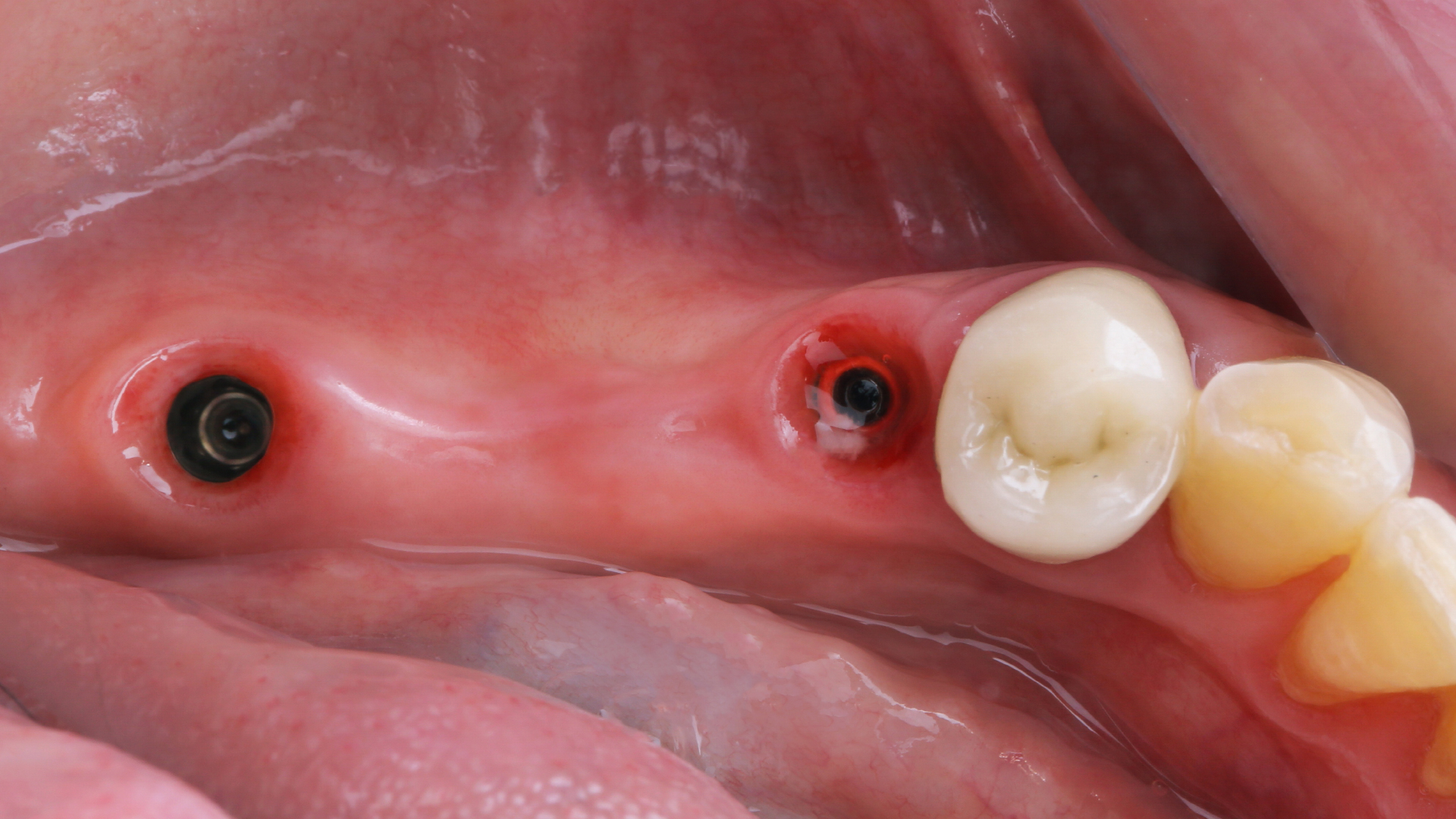
The benefits of dental implants
Dental implants offer several significant advantages:
- They look like real teeth, improving aesthetics and self-confidence.
- They restore the ability to chew and speak normally, often better than traditional dentures.
- Implants help prevent bone resorption by stimulating the jawbone, just as natural tooth roots would.
- With proper care, implants can last a lifetime, making them more durable than other tooth replacement options.

- Unlike dental bridges, implants do not require modification or trimming of adjacent healthy teeth.
- By maintaining the integrity of the jaw, implants prevent facial sagging and premature ageing, which are often associated with tooth loss.
- Implants can be cleaned and maintained like natural teeth without the need for special care.
- By replacing missing teeth, implants contribute to better oral health, reducing the risk of cavities and gum disease in adjacent teeth.
- Unlike removable dentures, implants are fixed and cause no irritation or discomfort

Risks and complications
Dental implants are generally considered a safe procedure, but as with any surgical intervention, they do present certain risks and possible complications.
During the procedure, the patient may be exposed to risks such as excessive bleeding, although this is usually well-controlled. There is also a risk of nerve damage, which can lead to numbness or pain, although this is rare.

Post-procedure complications include the risk of infection around the implant, which can usually be treated with antibiotics. Failure of osseointegration, where the implant does not integrate properly with the bone, can also occur.
These complications are relatively rare and can often be effectively managed by the dentist or surgeon. Dental implants have a high success rate and can offer a durable and satisfactory solution for replacing missing teeth.

The cost of dental implant procedure
The cost of dental implant procedures varies considerably depending on the country and clinic. In Turkey, the price for an implant procedure is generally between 300 and 500 euros, which is around 30-50% cheaper than in Europe. To this must be added the cost of the dental prosthesis, which is around 150 euros. Several factors can influence the total price, such as the clinic’s reputation, the surgeon’s experience, the quality of the material used, and the possible need for additional treatments such as bone grafting.
17160 vues
2 commentaires
0


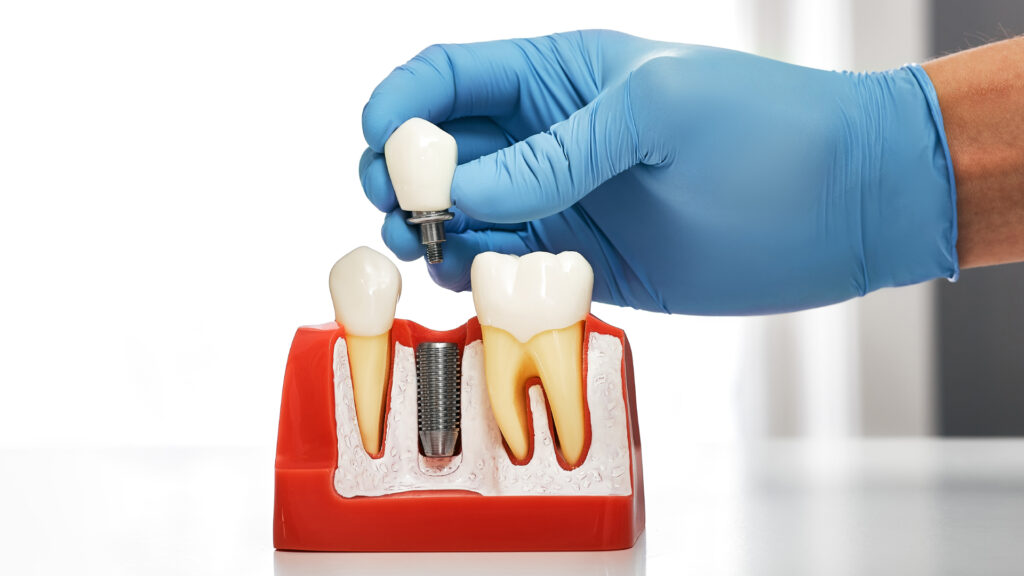
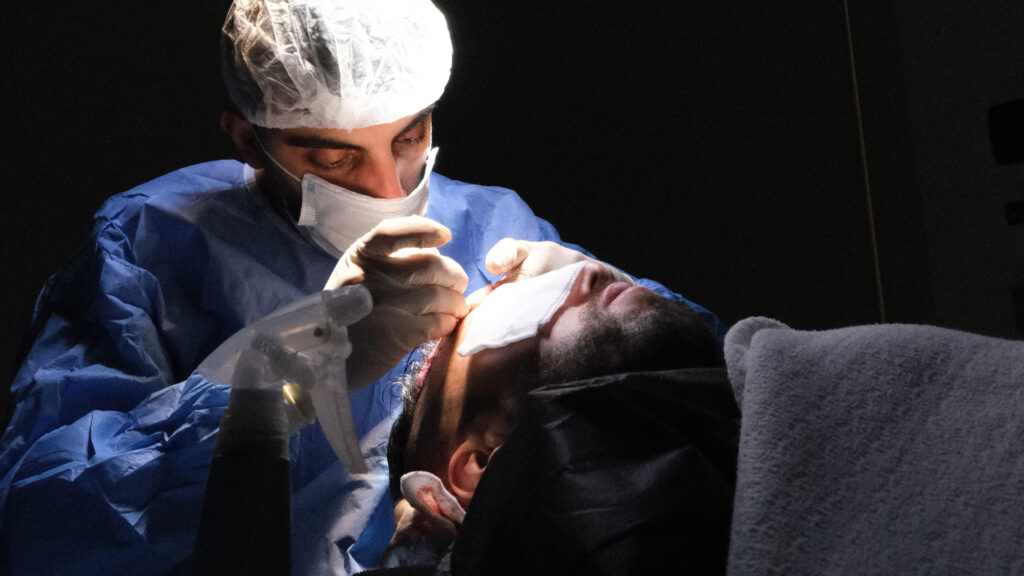


2 Commentaire(s)
I am looking for top and bottom full set of implants. However i still have 7 teeth on top and about 13 on the bottom. What happens in this case.
Hello and nice to meet you 😊
We need to conduct a study based on a panoramic X-ray. Here is our protocol if you would like a free quote for your treatments:
Please fill out the following form https://www.bodyexpert.online/en/call-back
Our customer service assistants will contact you directly via WhatsApp (free application).
Have a great day from the Bodyexpert.online team.